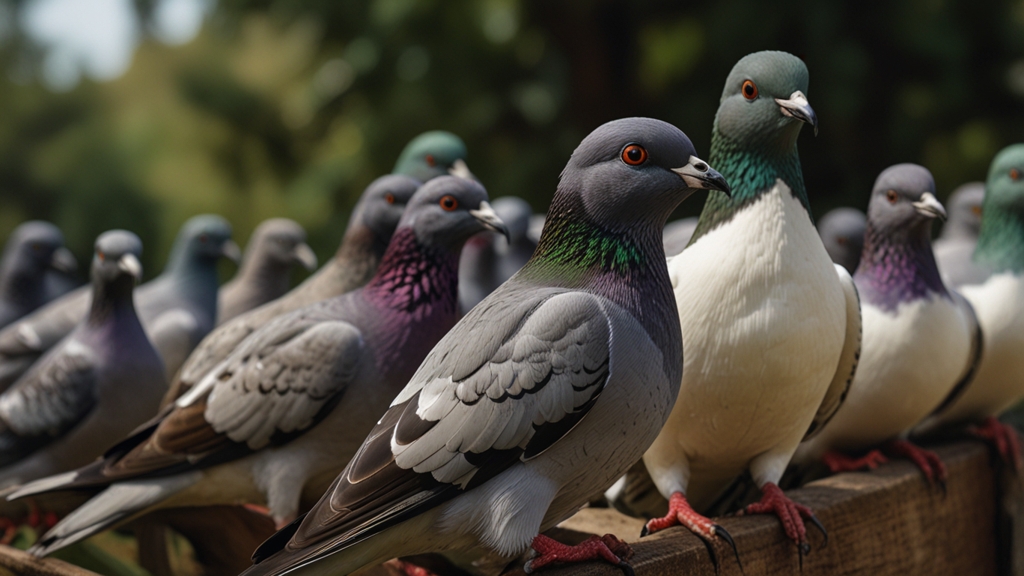From Homing Pigeons to High-Flying Warblers: Birds That Changed History
Birds have always been a source of fascination and admiration. While their beauty, grace, and songs enchant us, some birds have had historical impacts far beyond the realms of nature and art. From ancient communication systems to modern science, birds have influenced human history in remarkable ways. This article explores the extraordinary roles played by homing pigeons, carrier pigeons, and even migratory warblers in shaping the course of events and advancing human knowledge.
Homing Pigeons: The Skyward Messengers
Homing pigeons, with their uncanny ability to find their way back home over long distances, have played a crucial role in human communication. In ancient times, civilizations like the Egyptians and the Romans used these birds to send messages across vast distances. The pigeons' homing abilities were so reliable that they were often employed in crucial military and diplomatic communications.
"Throughout human history, birds have helped connect civilizations, disseminate information, and even save lives."
One of the most notable instances was during wartime. In World War I and World War II, homing pigeons were used to relay strategic military information. Cher Ami, a famous homing pigeon, heroically delivered a critical message during the Meuse-Argonne Offensive, saving nearly 200 soldiers. Cher Ami's bravery earned her several medals and recognition.
Carrier Pigeons: War Heroes
Carrier pigeons, a specialized category of homing pigeons, also made significant contributions during wartime. These birds were trained rigorously to carry messages between military units. The National Pigeon Service, established in the United Kingdom during World War II, was a testament to the critical role carrier pigeons played in wartime communication. They were so effective that they are credited with saving countless lives by delivering messages that facilitated strategic decisions and coordinated defenses.
"Carrier pigeons stood as silent, winged heroes amidst the chaos of war, proving their worth in every flight."
The tale of G.I. Joe, another legendary carrier pigeon, is a centerpiece of World War II folklore. G.I. Joe successfully delivered a message that prevented an Allied airstrike on an Italian town occupied by British forces, thereby averting a devastating friendly fire incident. For his valor, G.I. Joe was awarded the Dickin Medal, often described as the animal equivalent of the Victoria Cross.
Migratory Warblers: Studying Nature and Navigation
While homing and carrier pigeons have been celebrated for their roles in communication and warfare, other birds like migratory warblers have contributed to scientific knowledge. These small, often-overlooked birds undertake incredible journeys across continents, guided by inner compasses that scientists are only beginning to understand.
Contributing to our understanding of navigation, warblers have fascinated researchers for decades. Studies on migratory patterns of these birds have provided insights into the Earth's magnetic fields and the sophisticated biological mechanisms that enable long-distance travel. Research on warblers' migration has advanced the fields of ornithology, climatology, and even the study of human navigation and orientation.
Conclusion
The roles that birds have played in shaping human history are as varied as they are significant. From delivering crucial wartime messages to guiding scientists in understanding natural phenomena, birds have continuously impacted our world. By recognizing their contributions, we not only appreciate their historical significance but also underscore the value of preserving these creatures and their habitats for future generations.
"In every flutter of wing and song in the air, a story of connection, heroism, and discovery unfolds, reminding us of the timeless bond between humans and birds."
Birds, in their myriad forms and capabilities, have indeed changed history, making them not just messengers of the skies but also symbols of endurance, intelligence, and resilience.







